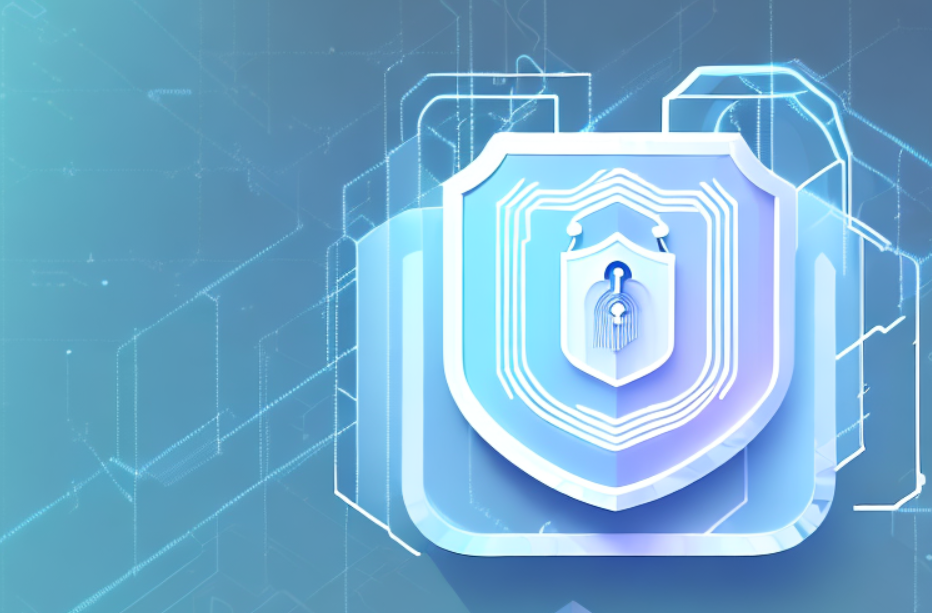The Essential Guide to Cyber Security
21 Jun, 20235
Contents
- Understanding Cyber Security
- What is Cyber Security?
- The Importance of Cyber Security
- Key Cyber Security Terminology
- Types of Cyber Threats
- Malware
- Phishing
- Ransomware
- Distributed Denial of Service (DDoS) Attacks
- Insider Threats
- Cyber Security Best Practices
- Creating Strong Passwords
- Regular Software Updates
- Implementing Multi-Factor Authentication
- Backing Up Data
- Avoiding Suspicious Links and Emails
The Essential Guide to Cyber Security
Cyber security is an ever-growing concern in today's digital age. With the widespread use of technology and the internet, it's more important than ever to understand and protect ourselves from potential threats. In this article, we'll explore the basics of cyber security, the different types of threats that exist, and best practices for staying secure online.
Understanding Cyber Security
What is Cyber Security?
Cyber security refers to the practice of protecting internet-connected systems, including hardware, software, and data, from digital attacks and unauthorised access. The goal of cyber security is to reduce the risk of cyber attacks and protect sensitive information from being compromised.
In today's digital age, cyber security has become a critical concern for individuals, businesses, and governments alike. With the increasing use of technology and the internet, the risk of cyber attacks has grown exponentially. This is why cyber security has become a top priority for organisations of all sizes.
The Importance of Cyber Security
In today's interconnected world, cyber attacks can cause serious damage to individuals, businesses, and even governments. Cyber attacks can compromise personal information, steal financial data, disrupt operations, and damage a company's reputation. Having robust cyber security measures in place is essential to reduce the risk of these attacks and prevent cyber criminals from accessing sensitive information.
One of the most significant benefits of having strong cyber security measures in place is that it helps build trust with customers and clients. When individuals know that their personal information is being protected, they are more likely to do business with a company. This can lead to increased revenue and a stronger reputation in the industry.
Key Cyber Security Terminology
Before we delve into the different types of threats and best practices for staying safe online, it's important to understand some key terminology used in the cyber security industry:
- Firewall: A network security device that monitors and filters incoming and outgoing network traffic based on predefined security rules.
- VPN: A virtual private network that allows users to securely access a private network and share data remotely over a public network.
- Encryption: The process of converting information (plaintext) into a secret code (ciphertext) to prevent unauthorised access.
- Virus: Malicious software that can replicate itself and spread to other systems through infected files or emails.
- Malware: A broader term that encompasses various types of malicious software, including viruses, spyware, and trojan horses.
Understanding these key terms is essential for anyone who wants to stay safe online. By knowing what these terms mean, individuals can better protect themselves from cyber attacks and make informed decisions about their online activities.
It's also important to note that cyber security is an ever-evolving field, with new threats and vulnerabilities emerging all the time. This is why it's essential to stay up-to-date on the latest trends and best practices in cyber security.
Types of Cyber Threats
As our world becomes more connected through technology, cyber threats continue to grow in number and complexity. It's important to understand the different types of cyber threats so that you can take steps to protect yourself and your organisation. Let's take a closer look at some of the most common types of cyber threats:
Malware
Malware is a type of malicious software designed to disrupt, damage, or gain unauthorised access to a system. Common types of malware include viruses, spyware, and trojan horses. Viruses are programs that replicate themselves and spread from one system to another. They often attach themselves to legitimate files and can cause serious damage to a computer system. Spyware, on the other hand, is designed to secretly gather information about a user's online activities and transmit it back to the attacker. Trojan horses are programs that appear harmless but actually contain hidden code that allows an attacker to gain unauthorised access to a system.
One example of a particularly damaging piece of malware is the WannaCry ransomware attack that occurred in 2017. The attack affected over 200,000 computers in 150 countries, encrypting users' files and demanding payment in exchange for the decryption key.
Phishing
Phishing is a type of social engineering attack in which an attacker sends a fraudulent email or message to a user in an attempt to gain access to sensitive information. These emails often appear legitimate, but contain links to fake websites or request personal information such as passwords or credit card details.
Phishing attacks can be difficult to spot, but there are some red flags to look out for. For example, the email may contain spelling or grammar errors, or the sender's email address may be slightly different from the legitimate sender's address.
Ransomware
Ransomware is a type of malware that encrypts a user's files and demands payment in exchange for the decryption key. This type of attack can be particularly damaging as it can result in the loss of important data or files.
In addition to the WannaCry attack mentioned earlier, there have been several other high-profile ransomware attacks in recent years. For example, in 2021, the Colonial Pipeline was hit with a ransomware attack that caused the company to shut down its pipeline for several days, leading to gas shortages and price increases in several states.
Distributed Denial of Service (DDoS) Attacks
A DDoS attack is a type of cyber attack in which a large number of infected devices are used to flood a targeted system with traffic, causing it to become overwhelmed and inaccessible. These attacks can be difficult to prevent and can cause serious disruptions to businesses or online services.
One example of a DDoS attack occurred in 2016, when the domain name service provider Dyn was hit with a massive attack that caused several major websites, including Twitter and Netflix, to become temporarily unavailable.
Insider Threats
An insider threat is a type of attack in which a person with authorised access to a system uses that access for malicious purposes. Insider threats can be particularly difficult to detect and prevent, as the attacker may have legitimate access to sensitive information and systems.
One high-profile example of an insider threat occurred in 2013, when Edward Snowden leaked classified information from the National Security Agency (NSA) to the media. Snowden was a contractor for the NSA and had authorised access to the information he leaked.
As you can see, there are many different types of cyber threats that can pose a risk to individuals and organisations. It's important to stay informed about the latest threats and take steps to protect yourself and your data.
Cyber Security Best Practices
Cyber security is an essential part of our digital lives. As we increasingly rely on technology to manage our personal and professional lives, it's important to take steps to protect ourselves from potential cyber attacks. Here are some best practices to help you stay safe online:
Creating Strong Passwords
One of the most important steps you can take to protect your online accounts is to create strong passwords. A strong password is a combination of letters, numbers, and symbols that is at least 12 characters long. Avoid using common words or phrases, and never reuse passwords across multiple accounts. It's also a good idea to use a password manager to help you create and store unique passwords for each of your accounts.
Additionally, consider enabling two-factor authentication wherever possible. This adds an extra layer of security by requiring a code or other form of verification in addition to your password.
Regular Software Updates
Keeping your software up to date is another important step in maintaining good cyber security practices. Software updates often contain important security patches and bug fixes that can help protect against known vulnerabilities. Make sure to enable automatic updates wherever possible, and always download updates directly from the software provider's website to avoid downloading malware or other malicious code.
Implementing Multi-Factor Authentication
Multi-factor authentication adds an extra layer of security to your online accounts by requiring an additional form of verification before granting access. This can include something you know (such as a password), something you have (such as a security key), or something you are (such as a biometric identifier). Consider enabling multi-factor authentication on all of your important accounts, including email, banking, and social media.
Backing Up Data
Regularly backing up your important data is an essential step in protecting against potential data loss from cyber attacks or hardware failures. Consider storing backups in a secure, off-site location to protect against physical damage or theft. Cloud storage services, such as Google Drive or Dropbox, can be a convenient and secure option for backing up your data.
Avoiding Suspicious Links and Emails
Phishing attacks are a common tactic used by cyber criminals to steal personal information or spread malware. These attacks often rely on users clicking on links or downloading attachments that contain malicious code. To avoid falling victim to phishing attacks, be cautious when opening emails or clicking on links from unknown or suspicious sources. Always verify the sender's email address and avoid clicking on links or downloading attachments if something seems suspicious.
By following these best practices, you can help protect yourself from potential cyber attacks and stay safe online. Remember to always stay vigilant and keep your software and security measures up to date.
Conclusion
As we've seen, cyber security is an essential part of our daily lives in today's digital age. Understanding the different types of threats and implementing best practices such as creating strong passwords, keeping software up to date, and avoiding suspicious links and emails can go a long way in reducing the risk of cyber attacks and keeping your data and information safe.
To learn more about expanding your cybersecurity team, please don't hesistate to get in touch for more information.



